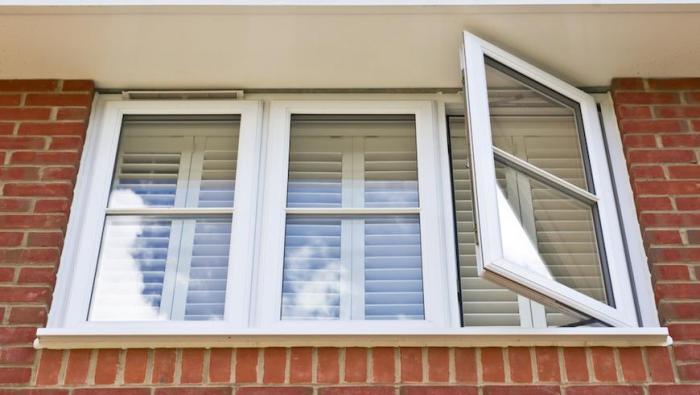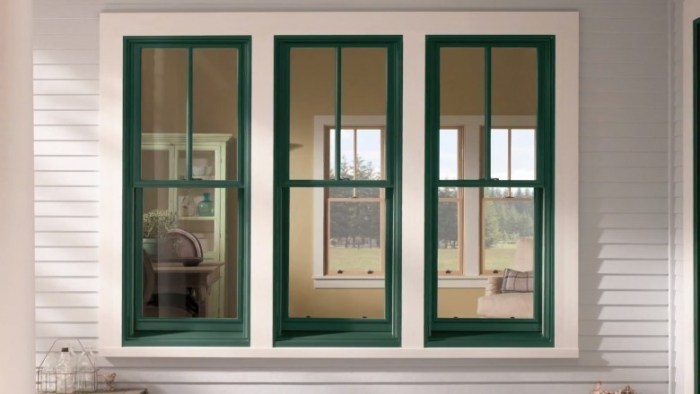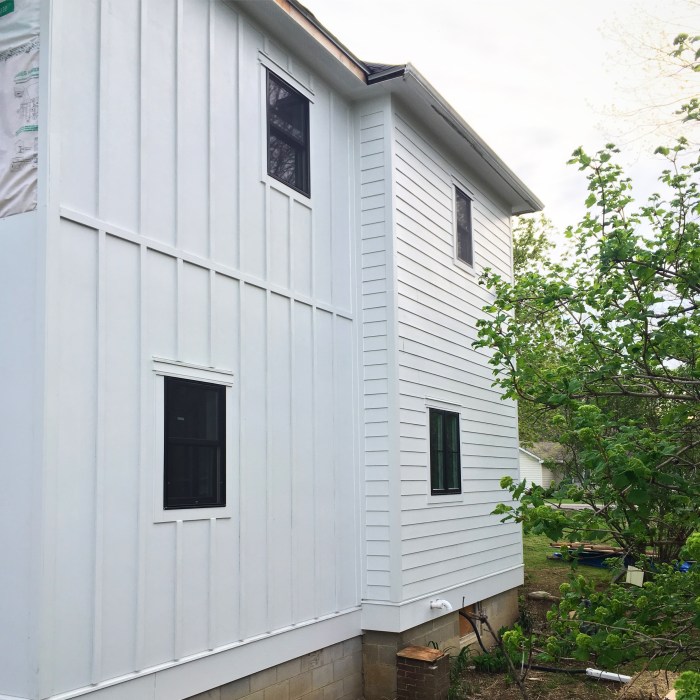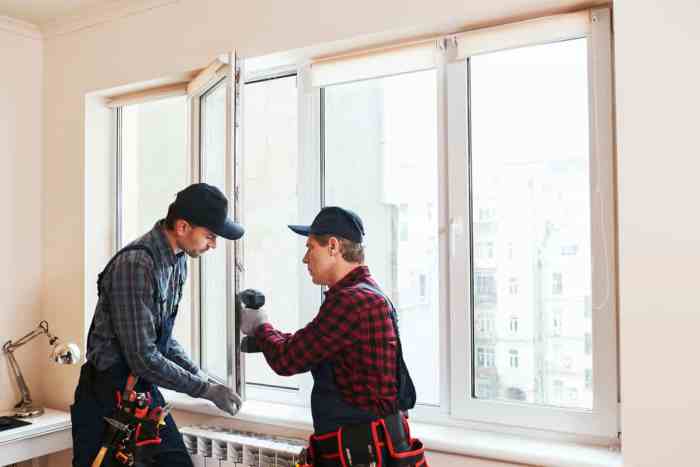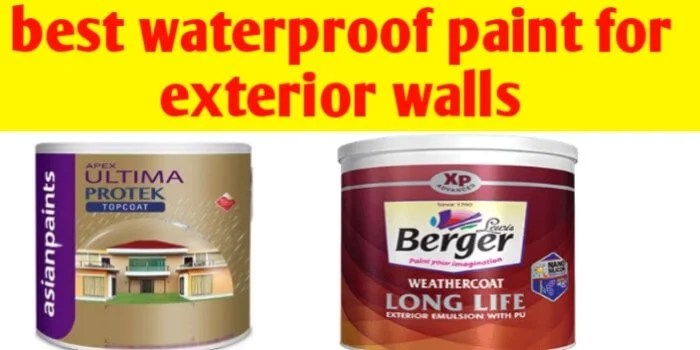New Windows for Home Your Guide
New windows for the home are more than just replacements; they’re an investment in your home’s comfort, security, and aesthetic appeal. This comprehensive guide explores the diverse options available, from energy-efficient designs to security features and stylish aesthetics. We’ll delve into the types of windows, their performance characteristics, and the factors that influence your choices.
Choosing the right windows is crucial for maximizing your home’s potential. We’ll analyze energy efficiency, security considerations, and design compatibility with your home’s architectural style. This detailed breakdown ensures you’re well-informed and equipped to make the best decision for your needs and budget.
Types of Windows
Home windows are crucial for natural light, ventilation, and aesthetic appeal. Choosing the right window type is essential for optimizing these aspects while considering factors like energy efficiency, security, and maintenance. Different window types offer varying levels of performance in these areas.
Understanding the strengths and weaknesses of each window type allows homeowners to make informed decisions that align with their specific needs and preferences. This section delves into the characteristics of common window types, providing a comprehensive overview to aid in the selection process.
Window Types Suitable for Homes
Various window types are available for residential use, each with unique features. These types cater to different architectural styles and functional requirements.
- Double-hung windows consist of two sashes that slide vertically, allowing for easy opening and closing. They are a classic choice known for their versatility and relatively straightforward operation. Double-hung windows are often found in older homes, but are still popular due to their familiar design.
- Casement windows are hinged on one side, opening outward like a door. Their outward-opening design is efficient for ventilation and can maximize natural light. Casement windows are often favored for their aesthetic appeal and ease of operation.
- Sliding windows are composed of two sashes that slide horizontally past each other. They are popular for their unobstructed views and easy operation. Sliding windows are ideal for maximizing the use of available space in a room.
- Bay windows project outward from the wall, creating a spacious seating area and offering a significant amount of natural light. They add architectural interest to a home, increasing curb appeal. Bay windows are often associated with traditional styles of architecture.
- Picture windows, also known as fixed windows, are non-operable and provide an expansive view. They are primarily used for maximizing natural light and creating a focal point in a room. Picture windows are a good choice for rooms that need a lot of natural light and a dramatic view.
Window Type Comparison
This table provides a comparative overview of different window types based on their performance in key areas.
| Window Type | Energy Efficiency | Security | Aesthetics |
|---|---|---|---|
| Double-hung | Moderate. Proper weatherstripping and seals are crucial for efficiency. | Good. Traditional locking mechanisms offer decent security. | Classic and versatile. Suitable for many architectural styles. |
| Casement | Good. Tight seals and weatherstripping contribute to efficiency. | Good. Modern locking mechanisms can enhance security. | Modern and stylish. Suitable for various architectural styles. |
| Sliding | Moderate. Proper weatherstripping and seals are crucial for efficiency. | Good. Modern locking mechanisms can enhance security. | Clean and minimalist. Suitable for contemporary designs. |
| Bay | Moderate. Insulation and seals are crucial for energy efficiency. | Good. Reinforced frames and locking mechanisms are recommended. | Elegant and visually appealing. Increases curb appeal. |
| Picture | Moderate. Insulation and seals are crucial for energy efficiency. | Moderate. Security measures need to be incorporated into the frame. | Dramatic and visually appealing. Ideal for maximizing views. |
Window Materials and Maintenance
The durability and maintenance requirements of window materials vary significantly. Choosing the right material is important for long-term performance and cost-effectiveness.
- Wood windows are known for their aesthetic appeal and ability to create a warm ambiance. However, wood requires regular maintenance, including painting or staining, to prevent decay and insect damage. Wood windows can be expensive to install initially, but can have a long lifespan with proper care.
- Vinyl windows are a popular choice due to their low maintenance and affordability. They are resistant to rot, warping, and insect damage, making them a practical option for homeowners. Vinyl windows are energy-efficient and require minimal upkeep.
- Aluminum windows are strong and lightweight, making them a good choice for modern homes. Aluminum windows are typically less expensive than wood or vinyl and are easy to clean. However, aluminum windows may not offer the same level of insulation as other materials.
Energy Efficiency
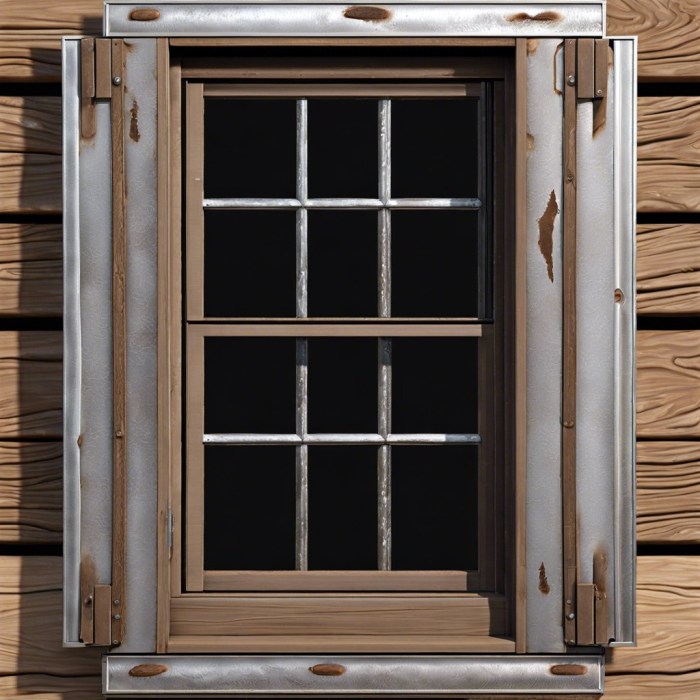
Source: windowdigest.com
Modern homes are increasingly focused on energy conservation, and windows play a crucial role in achieving this goal. Efficient windows significantly reduce energy consumption, leading to lower utility bills and a smaller environmental footprint. This section explores the importance of energy-efficient windows, their key features, and methods for evaluating their performance.
Energy-efficient windows are designed to minimize heat transfer, whether through conduction, convection, or radiation. This reduction in heat transfer directly impacts heating and cooling costs, allowing homeowners to save money while contributing to a more sustainable lifestyle.
Importance of Energy-Efficient Windows
Energy-efficient windows are critical in reducing home heating and cooling costs. By minimizing heat loss in winter and heat gain in summer, these windows help maintain a comfortable indoor temperature, thereby lowering the demand on HVAC systems. This translates to substantial savings on energy bills throughout the year. For example, a home with poorly insulated windows might use 20-30% more energy for heating and cooling compared to a home with energy-efficient windows.
Energy-Saving Features of Modern Windows
Modern windows incorporate several features to enhance energy efficiency. Low-E (low emissivity) coatings are a key component. These coatings reflect infrared radiation, reducing heat transfer through the glass. Argon gas fills are another common feature. Argon, being a less conductive gas than air, further reduces heat transfer between the panes. Multiple-pane windows, often with a spacer filled with gas, are another significant advancement, improving thermal insulation and efficiency.
Determining Energy Efficiency Rating
Window energy efficiency is typically measured using a rating system, such as the Energy Star rating. These ratings are based on standardized testing protocols that measure the window’s ability to resist heat transfer. Higher ratings correspond to better energy performance. Homeowners can use these ratings to compare different window types and choose the most energy-efficient option for their needs. Online resources and local building supply retailers often provide detailed information about window energy ratings.
Examples of Energy-Efficient Installations
Many homeowners have reported significant energy savings after installing energy-efficient windows. For instance, a family in a cold climate noticed a 15% reduction in heating costs after replacing their older windows with high-performance, triple-pane models with argon gas fills and low-E coatings. Another homeowner in a hot climate experienced a 10% decrease in cooling costs following the installation of energy-efficient double-pane windows with low-E coatings. These examples demonstrate the potential for substantial energy savings.
Comparison of Window Types
The table below compares energy efficiency ratings of various window types. Note that ratings can vary based on specific features and manufacturing processes.
| Window Type | Energy Rating (estimated) | Estimated Savings (per year, approximate) |
|---|---|---|
| Single-pane | Low (e.g., 1-2 stars) | Minimal |
| Double-pane, standard | Medium (e.g., 3-4 stars) | Moderate (e.g., $50-$150) |
| Double-pane, low-E | High (e.g., 4-5 stars) | Significant (e.g., $150-$300+) |
| Triple-pane, argon-filled, low-E | Very High (e.g., 5-6 stars) | Highest (e.g., $300+) |
Security Considerations
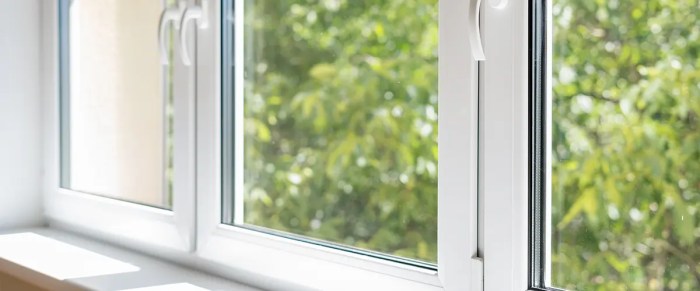
Source: mywindowsforlife.com
Securing your home is paramount, and windows, often overlooked, are significant entry points. Properly considered window types, reinforced materials, and installation techniques are crucial to deterring potential intruders and maintaining safety. This section delves into the security features of various window types, highlighting vulnerabilities and strategies for mitigation.
Window Security Features
Windows are a common point of entry for intruders. Understanding the security features of different window types, along with appropriate installation practices, is essential for a strong home defense. Different window types offer varying levels of resistance to forced entry, influencing the overall security of a home.
Reinforced Glass and Security Locking Mechanisms
Reinforced glass, often laminated or tempered, significantly enhances window security. Laminated glass uses an interlayer to prevent shattering, making it more difficult for intruders to break through. Tempered glass, while more fragile than laminated, is designed to break into small, relatively harmless pieces, making it less attractive to intruders. Security locking mechanisms, such as reinforced frames, multi-point locking systems, and specialized hardware, further bolster window security.
Importance of Proper Window Installation
Proper window installation is crucial for maximizing security. Poorly installed windows can create gaps or weak points, enabling unauthorized entry. A professional installation ensures that the window frame is securely fitted, preventing gaps that intruders could exploit. Gaps and inadequate seals around the window frame allow for forced entry. These gaps can be exploited by intruders to gain entry into a house.
Common Security Threats to Windows and Mitigation Strategies
Common security threats to Windows include forced entry using tools, such as crowbars or pry bars, and attempts to shatter the glass. Furthermore, intruders may try to manipulate locks and hinges. Mitigating these threats requires a multi-pronged approach. Reinforced glass, secure locking mechanisms, and professional installation practices are key in preventing vulnerabilities.
Comparison of Window Security Ratings
| Window Type | Security Rating | Vulnerability Mitigation |
|---|---|---|
| Laminated Glass with Multi-point Locks | High | Difficult to break, strong locking mechanisms |
| Tempered Glass with Reinforced Frames | Medium | Breaks into small pieces, strong frames |
| Standard Glass with Basic Locks | Low | Easily breakable, weak locking mechanisms |
Home Style and Design: New Windows For Home
Selecting windows is more than just functionality; it’s a significant element in shaping the overall aesthetic appeal of a home. The right window style can elevate a house’s design and create a cohesive look that reflects the homeowner’s taste and the architectural style of the property. Choosing the appropriate window style, size, and placement can dramatically enhance the visual impact and overall appeal of the dwelling.
Understanding how window selection aligns with architectural style is crucial. Careful consideration of window features, such as shape, size, and frame material, can greatly influence the home’s aesthetic and create a unified design. This section explores the interplay between window choices and architectural style, providing valuable insights for homeowners seeking to maximize the aesthetic potential of their windows.
Influence on Aesthetic Appeal
Windows are a key architectural feature that significantly impacts the visual appeal of a home. The choice of window style, size, and placement directly affects the home’s overall aesthetic. For example, large, expansive windows in a contemporary home can create a sense of spaciousness and openness, while smaller, more intricate windows in a Victorian-style home can add character and historical charm. Furthermore, the window frame material, such as wood, vinyl, or aluminum, can also influence the aesthetic of the home, aligning with different architectural styles.
Window Styles for Different Architectural Styles, New windows for home
Different architectural styles lend themselves to particular window styles. Understanding these relationships allows homeowners to select windows that complement and enhance the overall design of their homes.
- Victorian Homes: Victorian homes often feature intricate, ornate windows with multiple panes and decorative details. Casement windows with stained glass or leaded glass panels are a common feature. These elaborate windows reflect the rich detailing and grandeur characteristic of the Victorian era. The window styles typically feature elaborate decorative elements, including carvings, moldings, and embellishments.
- Contemporary Homes: Contemporary homes often prioritize clean lines, simplicity, and functionality. Large, rectangular windows are common, allowing for abundant natural light and maximizing views. Frameless or minimal-frame windows are frequently used to emphasize the architectural lines and create a modern aesthetic. A common characteristic is a focus on maximizing light and open spaces.
- Modern Homes: Modern homes often emphasize geometric shapes, simple lines, and clean aesthetics. Large, expansive windows are common to create a connection with the outdoors. Often, sliding or operable windows are integrated into the overall design, creating an open floor plan. The focus is on functionality and maximizing views.
…Window design example for a modern home… A modern home might feature large, rectangular windows that run the length of a wall, creating a seamless transition between indoor and outdoor spaces. The frame material would likely be neutral, such as brushed aluminum or a matte black, to maintain the clean lines of the architecture.
Window Placement and Size for Enhanced Design
Strategic placement and sizing of windows can greatly enhance a home’s design. Careful consideration of window placement can maximize natural light, improve ventilation, and create an inviting atmosphere. For example, strategically placing a window near a fireplace can create a focal point within the room.
- Maximizing Natural Light: Positioning windows to maximize natural light can significantly improve the ambiance of a room. Windows placed strategically near a view can create a connection with the surrounding landscape, while ensuring proper light distribution throughout the interior.
- Creating Visual Flow: Arranging windows to create a visual flow between different rooms or areas of the home can improve the aesthetic appeal and overall functionality of the space. The use of arched windows or bay windows can visually expand the room, allowing more natural light to enter.
Gallery of Window Designs
The following table illustrates examples of window designs that complement various architectural styles.
| Architectural Style | Suitable Window Styles | Visual Examples |
|---|---|---|
| Victorian | Casement windows with stained glass, double-hung windows with decorative trim, and arched windows | Images of Victorian homes showcase these window types. Visual examples would depict ornate patterns, multiple panes, and intricate details on the window frames. |
| Contemporary | Large, rectangular windows, sliding windows, and frameless windows | Images of contemporary homes with expansive windows that showcase a clean, minimalist design. Visual examples would show sleek lines and minimal frame details. |
| Modern | Large, expansive windows, minimalist windows, sliding windows, and operable windows | Images of modern homes feature large, uninterrupted windows that seamlessly blend with the exterior. Visual examples would show geometric shapes, clean lines, and an emphasis on maximizing views. |
Cost and Budget
Replacing windows can be a significant investment, but careful planning and understanding of costs can make the process more manageable. Factors like window type, size, features, and installation methods all play a role in the overall price. A well-defined budget will help you stay within your financial limits and avoid surprises.
Window Price Ranges
Understanding the price spectrum for different window types and materials is crucial for budgeting. Vinyl windows typically represent the more affordable option, often falling between $300 and $1,000 per window, depending on size, features, and installation complexity. Wood windows, while offering a classic aesthetic, command a higher price range, usually between $500 and $2,000 per window. Energy-efficient windows, incorporating advanced glazing or gas-filled insulating units, can add to the cost, typically ranging from $700 to $1,500 or more per window. Custom-designed windows, with unique features or large sizes, will typically cost significantly more.
Factors Affecting Window Costs
Several factors influence the final cost of window replacements. Window size is a primary determinant, with larger windows generally commanding higher prices due to the increased materials and labor needed. The complexity of the installation also affects the cost; more intricate installations, like those in older homes with unique framing, will usually increase the price. Additional features, such as built-in security enhancements or specialized energy-efficient glass, will also contribute to the overall cost. For example, adding a security film to the glass can add a substantial amount to the price, but it can provide a return on investment in the form of enhanced security.
Financing Options
Several financing options can assist with window replacement projects. Home improvement loans offer a fixed interest rate and typically allow for larger loan amounts. Home equity loans use your home equity as collateral, potentially leading to lower interest rates, but may have higher monthly payments. Some banks and financial institutions offer special financing plans tailored for home improvement projects, which may include favorable terms and flexible repayment schedules. Many retailers offer in-house financing plans, often with attractive introductory rates or flexible payment terms. It’s advisable to compare different financing options based on interest rates, terms, and fees.
Long-Term Costs
The long-term costs of different window types need careful consideration. While initial costs might vary, the energy efficiency and durability of certain windows can translate into substantial long-term savings. For instance, energy-efficient windows can reduce heating and cooling costs, ultimately offsetting the higher initial investment over time. Maintenance costs also vary. Vinyl windows are generally low-maintenance, requiring minimal upkeep. Wood windows, on the other hand, may need periodic refinishing or sealing to preserve their appearance and longevity. The long-term cost of repairs also varies significantly depending on the window type and any pre-existing conditions.
Creating a Budget
Developing a comprehensive budget for window replacement projects is crucial. Start by estimating the total number of windows needing replacement. Gather quotes from multiple window installers, comparing not only prices but also warranties and guarantees. Consider potential additional costs like permits or related work such as exterior repairs, or the need for professional assistance. Develop a detailed spreadsheet or use dedicated software to track expenses, allowing for adjustments as the project progresses. Finally, create a realistic timeline for the project, allowing for unexpected delays or changes in plans.
| Window Type | Estimated Cost | Financing Options |
|---|---|---|
| Vinyl | $300-$1,000 per window | Home improvement loans, in-house financing |
| Wood | $500-$2,000 per window | Home equity loans, bank financing |
| Energy-efficient | $700-$1,500+ per window | Home improvement loans, retail financing |
Installation and Maintenance
Proper installation and ongoing maintenance are crucial for ensuring the longevity, performance, and safety of your new windows. A well-installed window system will not only enhance the aesthetic appeal of your home but also contribute significantly to energy efficiency and security. Neglecting these aspects can lead to costly repairs, decreased energy savings, and potential safety hazards.
Installation Steps
A professional installation is recommended for optimal results. However, understanding the process can help you evaluate the work of a contractor and ensure the quality of the installation. General steps involve meticulous preparation of the window frame, ensuring a snug fit, and careful handling of the glass panes. Precise measurements and proper alignment are essential. Furthermore, proper sealing is paramount to prevent drafts and moisture intrusion.
- Preparation: Thoroughly inspect the existing frame and ensure it’s clean, dry, and adequately prepared for the new window. This may involve patching any gaps or irregularities in the frame. Ensure the window sill is also prepared to support the new window installation.
- Installation of the Window Frame: Carefully align the new window frame with the existing opening, ensuring it fits snugly. Secure the frame using the appropriate hardware, ensuring a level and stable position.
- Installation of the Glass Pane(s): Carefully place the glass pane(s) into the frame, ensuring a secure fit. Proper glazing techniques should be followed to prevent any air gaps or movement. The glass should be firmly secured with glazing compound.
- Sealing and Finishing: Apply caulk or sealant to all joints and gaps to create a watertight and draft-proof seal. Ensure proper ventilation is maintained. Clean up any debris and excess materials. Finally, check the functionality of the window components such as handles and locks.
Importance of Proper Installation
Proper window installation is essential for the long-term performance and safety of your windows. A poorly installed window can lead to: drafts, energy loss, water damage, and structural issues. Improperly sealed windows can contribute to higher energy bills and a less comfortable indoor environment. Moreover, poorly installed windows can compromise security.
Window Maintenance Procedures
Regular maintenance helps extend the lifespan of your windows. The procedures involved vary based on the type of window and its specific components. Regular inspections and upkeep will minimize potential issues and prevent more costly repairs down the road. A preventative approach is far more cost-effective than reactive repairs.
- Regular Inspections: Visually inspect windows for any signs of damage, such as cracks, warping, or loose components. Pay attention to the seals and weatherstripping for signs of deterioration.
- Cleaning: Regular cleaning of the window panes and frames helps maintain their appearance and functionality. Use appropriate cleaning solutions to avoid damaging the window materials.
- Sealant Maintenance: Check window seals and weatherstripping for deterioration. Re-caulk or replace seals as needed to maintain a tight seal and prevent drafts.
- Lubrication: Lubricate moving parts, such as hinges and rollers, to ensure smooth operation and prevent squeaks. Use appropriate lubricants to avoid damage.
Tools and Materials for Window Cleaning and Maintenance
Proper cleaning and maintenance require specific tools and materials. Using the right tools prevents damage to the windows and ensures effective cleaning.
- Cleaning Solutions: Use appropriate cleaning solutions for the type of window material. Avoid harsh chemicals that can damage the finish or frames.
- Cleaning Tools: Use soft cloths, sponges, or specialized window cleaning tools. Avoid abrasive materials that can scratch the glass or frame. Consider a squeegee for effective streak-free cleaning.
- Maintenance Tools: Use tools such as caulk guns, sealant applicators, and lubricants for necessary maintenance tasks.
Window Maintenance Schedule
Regular maintenance tasks ensure the long-term performance of your windows. The frequency of these tasks will depend on factors such as the climate, usage, and the type of window.
| Maintenance Task | Frequency | Tools Needed |
|---|---|---|
| Visual Inspection | Monthly | None |
| Cleaning | Quarterly | Cleaning solution, soft cloth, squeegee |
| Sealant Inspection | Semi-annually | Visual inspection, sealant applicator |
| Lubrication | Annually | Appropriate lubricant, lubricant applicator |
Final Conclusion
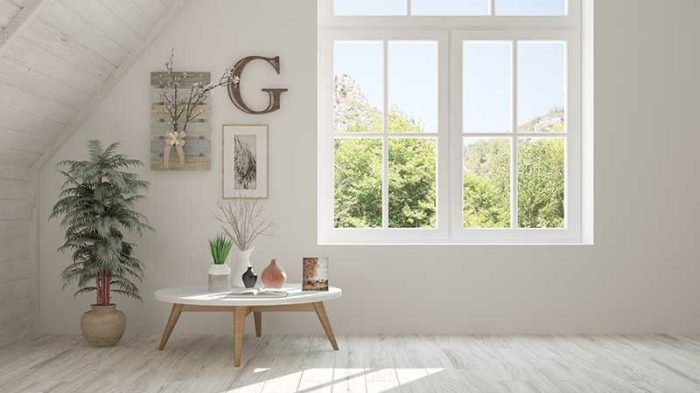
Source: hansons.com
In conclusion, upgrading your home’s windows is a significant undertaking that impacts both your immediate comfort and long-term investment. This guide has presented a variety of factors to consider, from energy efficiency to security and aesthetics. By carefully weighing these elements, you can select windows that enhance your home’s value, improve its functionality, and align with your individual preferences. Remember to prioritize your budget and consult professionals for expert advice throughout the process.
